Romantic relationships (or romantically tinged ones) in serial storytelling can create problems and challenges for the storytellers. “Unrelieved sexual tension” (as it often gets called) can be used to generate plenty of drama in stories, and when it occurs between recurring (or at least significant) characters, the storyteller can have a lot of options.
The archetype of the Lovers specifically involves relationship. But the point about the relationship is that it is not merely about sexual lust, although physical attraction can be a (powerful) element. Instead, for the archetype to function, the relationship needs to be or to be growing toward a balanced partnership, demonstrating respect and appreciation going in both directions.
In recent years, however, there has been a tendency in some storytellers (particularly those writing for television) to believe that resolving the sexual tension, letting a couple come together fully as partners, would kill the dramatic tension between these principal characters. The reason for avoiding a relationship “resolution” is given in one word: “Moonlighting.”
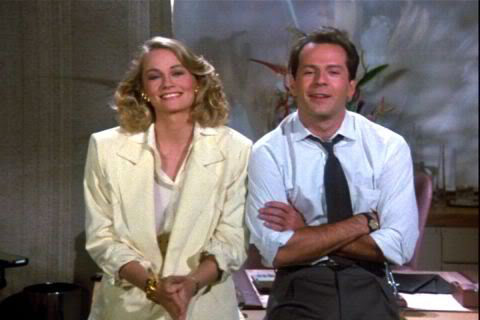
But long before the show Moonlighting hit the air, the concept of a romantic couple working together to solve mysteries charmed audiences in a series of stories and films. Nick and Nora Charles romped through stories, playfully bantering as they worked their way to the stories’ ends. A couple, a married couple – definitely a case of requited love.
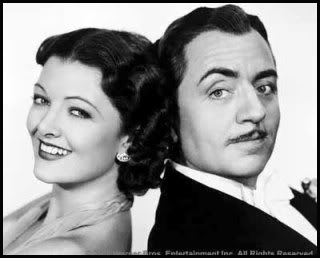
Nick and Nora Charles
So, if it is possible to make a requited relationship work in a series of stories, what should the storyteller choose: requited or unrequited?
Some series start with an already established relationship, definitely invoking the prototype of Nick and Nora.
Hart to Hart, for instance, featured a wealthy couple who are shown as having a well-balanced relationship. As marital partners they demonstrate genuine love and respect for each other. That respect continues over into their crime-fighting activities.
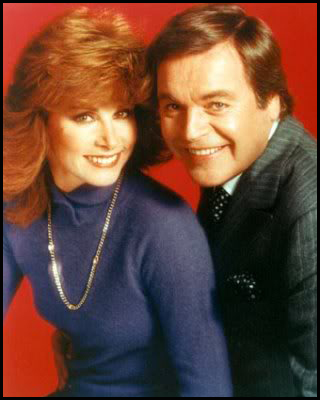
Hart to Hart
Other relationships are presented not as an established partnership, but rather as one that is destined to become such.

John and Aeryn of Farscape
In the sceince fiction series, Farscape, the relationship between John Crichton and Aeryn Sun explodes from the very beginning. She beats him up. She’s a pilot and commando and he’s a sceintist astronaut. But from the moment the audience sees John’s reaction to this impressive woman, they know this pair will eventually work their way to a requited relationship. Dramatic tension does not disappear between the two: they often have different opinions about solutions to problems, and circumstances around them also keep pulling them apart.
Working toward a functional partnership has been used in other series, to good effect.
In the series Remington Steele, private investigator Laura Holt kept running into chauvinistic dismissal because she was a woman. (Hey, it was the ’80s). So she created a fictional boss, “Remington Steele.” One day, by accident, a charming con-man and thief stepped into the alias and once Steele had a public face, Laura couldn’t get rid of him. Because of his (seemingly) unrequited attraction to Laura, the (now known as) Steele more or less reforms his ways, and works to learn her business, to really become her equal partner.
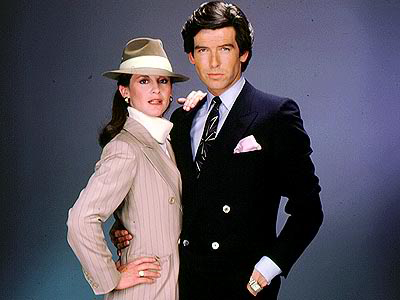
Laura Holt and Remington Steele
Another couple who work their way toward requited affections are Fox Mulder and Dana Scully of The X-Files.
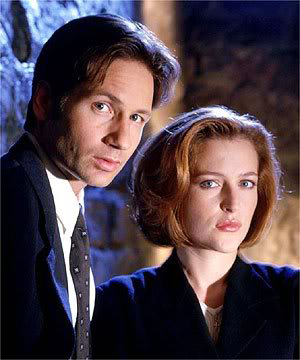
Mulder and Scully
This pair begins with a level of professional equality. They are both FBI agents in their own rights. Mulder is also an eccentric genius, while Scully is a brilliant trained scientist and medical doctor. Mulder’s acceptance of outre possiblities gets balanced by Scully’s insistence upon hard evidence and strict science. That dichotomy creates a tension that carries stories a long way. In the meantime, the fact that Scully grows to understand Mulder and he is never intimidated by Scully’s intellect creates a strong bond between them.
Understanding between participants in a relationship is a very powerful glue. It can be used in many ways by storytellers. In Burn Notice, understanding acts as a very important catalyst between Michael Westen and Fiona Glenanne.
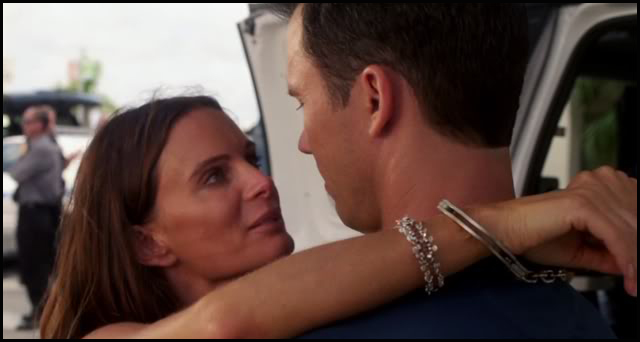
Fiona and Michael
Their story together begins before the series starts. They had been lovers, but parted. Michael states it was to protect her when his cover was blown, but as things unfold it is clear to the audience that another reason was that she was getting “too close.” Fiona understands Michael very well. She challenges him when he’s inclined to let expedience supercede morality. For a spy, even a burned one, issues of the morailty of immeidate actions can be tricky. There is a definite tendency to let the ends justify the means. But for Michael, if he stays on that path he runs the danger of becoming just like his souless mentor, Larry.
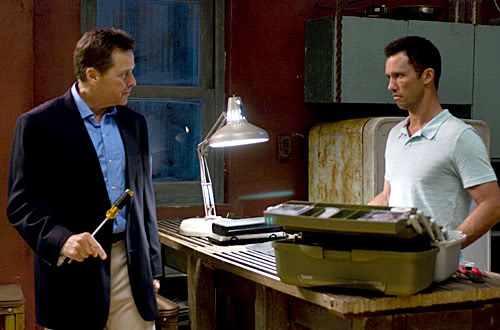
Larry and Michael
Fiona serves as Michael’s moral compass, and he has grown to realize how necessary she is to him, causing their intimate relationship to re-establish itself. Requited.
So what about unrequited relationships? Isn’t it possible to sustain a sort of romantic tension between a couple without their bringing it into the open, even consumating it? After all, many critics in looking back at Moonlighting feel that the storytellers for the show should never have taken that route.
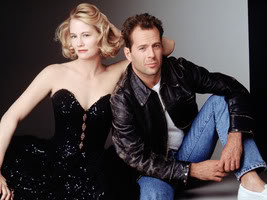
Cybill Shepherd and Bruce Willis star in Moonlighting.
If ever there was a character in the realm of fiction who seemed immune to the hold of romantic relationship, it is that of Sherlock Holmes. Yet even his creator, Arthur Conan Doyle, could not resist the lure of romance. He chose to make it “unrequited” (as in unconsumated, or even openly acknowledged), but for Sherlock there was always only one woman, The Woman, Irene Adler. The storytellers of the modern version hold to this.
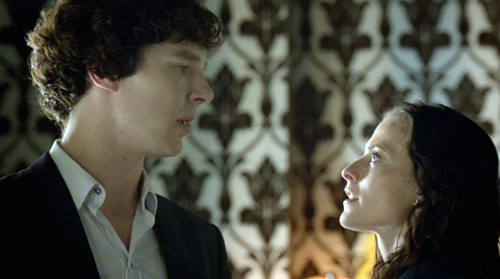
Sherlock and Irene
The power and attraction between this pair is a matching of intellect and understanding. They challenge each other as no two other people do. Yet, they hold off from each other, standing on opposited sides of an ethical fence (among other things). For the audience, the question hovers as to just how strong that fence really is.
Another famous literary couple who held themselves at a distance for some time is amateur detective Lord Peter Wimsey and novelist Harriet Vane.
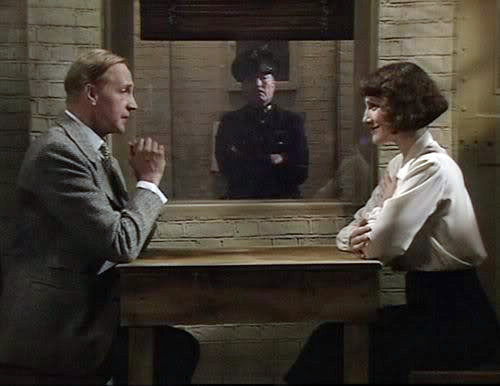
Lord Peter and Harriet Vane
Author Dorothy L. Sayers created a “relationship” for these two where once he encountered Harriet – on trial for murder – Lord Peter was entirely smitten with her. He had to suffer the pangs of unrequited love for a few novels, because, although she enjoyed the intellectual partnership with Lord Peter, Harriet deeply resented the weight of gratitude on her emotions. Eventually this hindrence to requitement got worked out, but not without several challenges to the relationship.
What does all this say for a relationship that lingers in the in-between zone, such as that on Castle?
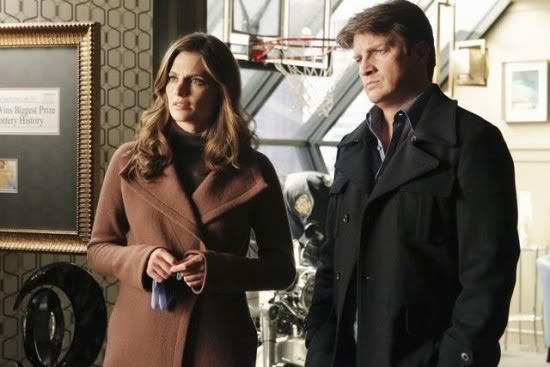
Kate Beckett and Richard Castle
Like Lord Peter, novelist Rick Castle was speedily smitten with Detective Kate Beckett. As a professional detective, Beckett frequently chafes at Castle’s flights of fancy. However, he also brings attentive observation and excellent insight to the table. As with Lord Peter and Harriet or Sherlock and Irene, Beckett and Castle have encountered an intellectual equal and partner in the other person. The show’s storytellers have (over most of four seasons) avoided bringing requitement of love entirely out into the open, but the health of this relathionship is quite evident. Genuine respect and trust exists between Beckett and Castle, and has been there from the start.
Can there be problems when love is requited between characters? Of course. Just look at what happenes between the principals in Camelot.
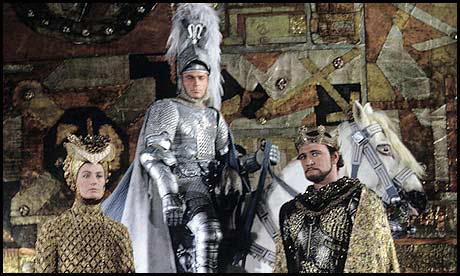
Guinevere, Lancelot and Arthur
Arthur and Guinevere have respect and affection between them, but not passion. Lancelot and Guinevere have passion, but her marriage to Arthur prohibits acknowledging that passion. And of course, the affection and respect both have for Arthur holds them back. But the moment they consumate their passion, openly requite their love, everything crumbles around them, and the very thing that drew them to each other drives them apart. They basically lost respect for themselves and could not sustain the relationship.
So, what really did go wrong with the characters on Moonlighting? As we have seen, there are a multitude of ways to handle requited relationships in serial storyteliing. More than simply being mismatched (as Crichton and Aeryn are, or Laura and Remington, or Beckett and Castle), Maddie and David began from a place of disresepct. She was a high-class model and he was a blue-collar gumshoe. Witty banter and one-upsmanship flew between them, and the audience was dazzled by it. But under the “unrelieved sexual tension” between them was very little solid groundwork of respect and understanding.
The power of a relationship, whether openly requited or not, lies in a partnership of respect and understanding. Sex alone is not a good glue.
